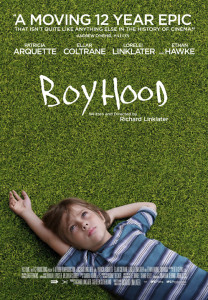I’ve never managed to get around to putting together a bucket list. Done lots of exciting and different things over the years, so never felt the need. Had I ever assembled one, it would have been divided into two distinct categories – one being things to do and the second would be places to visit. To fill the latter category I would have used the UNESCO World Heritage list. It’s a huge register of just over one thousand sites divided into cultural, natural, and mixed locations. I’ve blundered into a number of them during my travels, and I really have to give the twenty one members on the selection committee a “thumbs-up” for picking great places.
It isn’t easy to get on the list. An applicant must meet at least one of ten criteria established by UNESCO. The next step is to become part of the Tentative List, meet their approval, and finally be selected by the UNESCO Council. The last stage is to receive final approval from the UNESCO World Consent Committee. Takes effort, time, and patience to be selected.
Perhaps my all-time favorite is Luang Prabangin Laos far up the Mekong River. But last year I found a great number two. May I tell you about it?
Our experience with Belgium has been quite limited. We spent a couple of days in Brussels some years ago while on an “If It’s Tuesday, This Must Be Belgium” tour. A few years later we visited with friends who were living in Brussels. Our modus operandi has changed considerably since those days. As we age we are now spending weeks instead of days at each spot. This gives us an opportunity to feel the life of a location, rather than just a brief run-by.
We realized we knew very little about Belgium, so this country worked its way to the top of our “to visit list.” When one thinks of Belgium, Brussels is the first city that pops to mind. But as I said in my introduction, World Heritage sites usually prove more interesting, so our focus turned from Brussels to the near-by city of Bruges.
Bruges is a rabbit warren. Its history goes back about two thousand years. In the fourteenth century it was well established as one of the most prosperous and cosmopolitan cities of Europe. Its easy access to the North Sea made it a central operating city of major importance. Several major waterways allowed goods to flow into and out of Europe. The historic city center is a prominent World Heritage Site of UNESCO. This area is not only surrounded by canals, but they are also found in every corner of the town. Inside this tight little conclave a city of remarkable architectural and cultural interest developed.
The Industrial Revolution was not kind to Bruges. Other ports along the North Sea in France, Netherlands, and Germany drained much of the lifeblood from this thriving metropolis. The canals from Bruges to the sea began to fill with silt, and the deep draught ships found more appropriate ports.
World War I proved an important event for Burges, as it occupied the northern tip of the German defenses. The poem “In Flanders Field, the poppies blow, between the crosses, row on row,” speaks of the land surrounding Bruges. WWII had only a minor influence. The town was occupied by the Germans, of course, but was ignored by the advancing Allied armies. For all practical considerations, the occupying Germans just got up and left.
This light treatment was exceptionally beneficial for the town. There was very little damage done to the multitude of magnificent buildings, and Bruges became the stereotypical picture of historic houses. It achieved the coveted prize of being named a “UNESCO World Heritage Site” in 2008.
Now, let me slip from the broad overview to my own little Bruges story. Near the center of the town sits an old hospital, St. John’s, which was later expanded with the addition of a monastery and convent. The building was first built in the eleventh century and is located just across from the Church of our Lady. This complex served its purpose for many centuries, and then evolved into one of the leading hospitals in the city. It served in this capacity for many years and continues to have elements of its mission left behind, such as an herb garden which was used to grow healing plants. Alas, modern medicine made this beautiful sanctuary obsolete, and it now has been resurrected as a museum.
Just outside the west wall sits a white block and stone building. The wall itself contains a number of tombs – each of which holds the remains of local church leaders who were influential throughout the centuries.
The little building next door to the wall began as a nunnery. Early pictures show it standing stately by itself. The windows were heavily barred, and a local joker told me the bars were to keep the nuns in and not to keep the riffraff out. The construct of stone is strong and stately and shows no signs of its age. This building now is in its third resurrection. It currently houses a small apartment hotel with just eleven rooms, each about 600 square feet. It was here, within these four walls of ancient history, that we spent two plus weeks studying this fantastic town of Bruges.
My first observation found Bruges to have more chocolate factories and confectionary stores than it has churches. The chocolate shops are loaded with tourists stocking up on the well-known confections. Chocolate is resplendent in a variety of molds, not just proper-sized pieces. These molds can be of tools, such as pliers and wrenches, or as various body parts. (Use your own imagination here.) The chocolate shops are challenged for supremacy by the locally-brewed beers. Beside each chocolate shop lurks a store selling Bruges-brewed beer.
We spent days wandering the streets of this picturesque city. The canals offered slow and easy boat rides through the multitudes of canals. Horse-drawn carriages clip-clopped along the narrow cobblestone streets. Tea houses with Belgian waffles were mixed in between the chocolate shops and the beer retailers. The mixture of architectural design delighted the eye. The dates on most of the building went back three hundred, four hundred, even five hundred years.
We sat in parks, ate in street cafes, and allowed the tranquil atmosphere to sink in. Then, of course, we could return to our ex-nunnery for the night.
Once again I tip my hat to the UNESCO people. They did it right by putting Bruges on that very select list.





